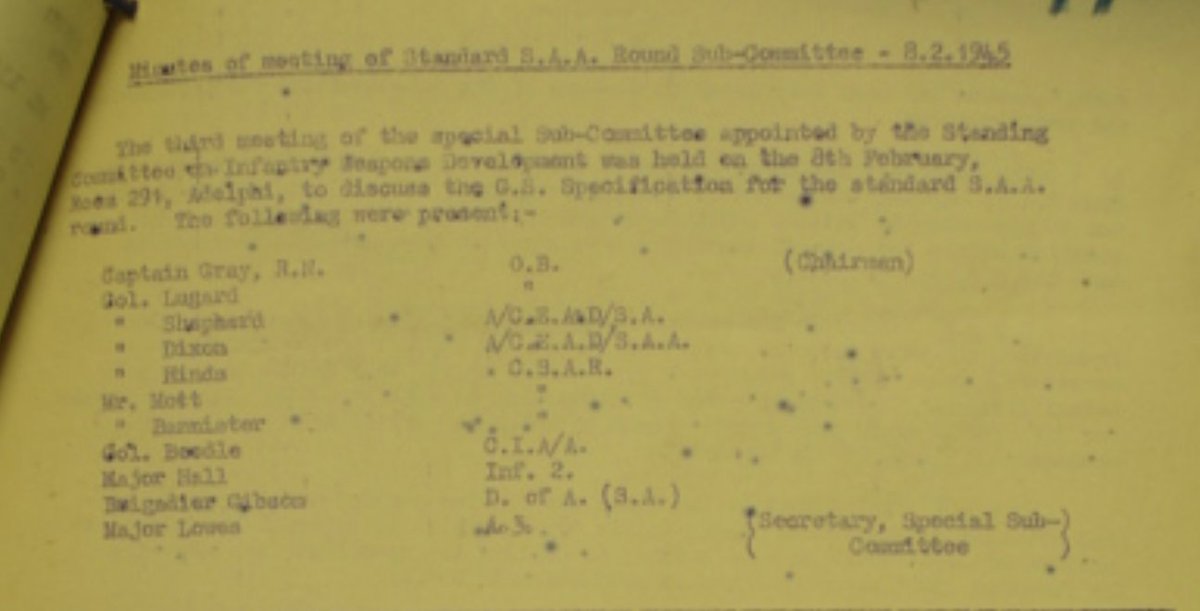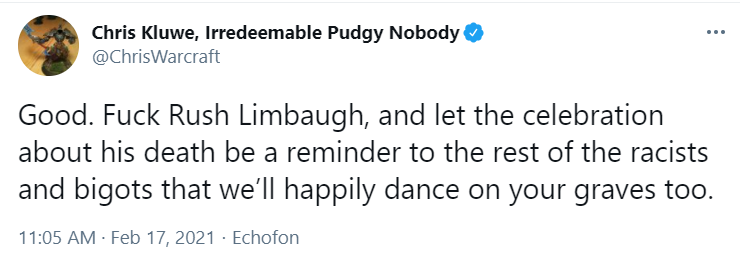The Panel came into being following a recommendation of the Standard SAA Round Sub-Committee which met on 8 February 1945.
This was a sub-committee of the Standing Committee on Infantry Weapons Development, that was created following the GS policy to adopt rimless SAA.
1b/
Note the framing as the identification of an "Ideal".
The use of this word is political.
It is designed to push the principal actors who had different views about small arms towards the solution being worked on by Brigadier Barlow and the Armament Design Establishment.
2a/
Thread on Brigadier Barlow here:
2b/
https://t.co/F7uumzjqBq
Thread on the Armament Design Establishment and the Design Department here:
2c/
https://t.co/AEZdpLFYZz
By now I hope you'll recognise that this term also connotes technological determinism.
The framing is designed to get the General Staff and the Americans to accept the technical solutions being developed by the ADE as in someway "inevitable". Better than 7.92/.30'06.
3a/
My thread on technological determinism is here:
3b/
https://t.co/CRBKjyRQv8
The panel itself was chaired by Dr Richard Beeching an OR worker who went on to shape the late 20th century British Rail Network, closing branch lines and focusing on main routes.
4/
https://t.co/PzgP3yegnf
The specifications that the Ideal Calibre Panel were working from were stated in a requirements document issued by the Organisation and Weapons Policy Committee of the General Staff from 27 Nov 1944.
5/
In January 1945, the Prime Minister Winston Churchill takes a direct interest in future small arms.
His position reflects his wartime experience in relation to mass production of SA/SAA. He is keen to tie Britain to the production capacity of the United States.
6/
Note that these letters are From Lieutenant-General Ronald Weeks (DCIGS) to the British Army Staff (pre-cursor to the British Joint Services Mission) in Washington DC.
They are explicitly telling the Americans that the UK is going to design a new SAA round.
7/
(Later Baron) Ronald Weeks is a very interesting character.
Before the FWW he was a technical trainee at Pilkington's Bros Ltd. In 1919 he rejoined, embraced modern commercial & industrial technigues in glass manufacture to become Chairman of the Executive Directors by 1939.
8/
During the FWW he was mentioned in dispatches 3 times, awarded the MC in 1917, the MC with bar in 1918 and the Croix de Guerre in 1918.
He rejoined the Army and served in the War Office from 1939.
After the War he Chaired Vickers.
9/
As I set out in this mini-thread, the British small arms establishment were against adopting .30'06, fearing that this would end their role in SA design. Instead they favoured experimentation based around 7.92mm.
10/
https://t.co/6cEZGOySLS
In his letter to the British Army Staff in DC, Weeks set out how agreement on standardisation with the Americans might work.
What he had not counted on was the sub-committee on Infantry Weapon Development establishing a panel to investigate an alternative to .30'06 & 7.92mm
11/
Some in the General Staff were of the opinion that .30'06 was the quickest and easiest way to adopt rimless SAA. There was experience with it with the P17 Rifle issued to the Home Guard & the Army could easily switch to the M-1 Garand.
12/
In May 1946, cost analysis led the OPCW to recommend the Army adopt .30'06. The CIGS (Montgomery) agreed in July 1946 and the UK was set to adopt the round once the Dominions had agreed.
13/
If Barlow, the ADE(SA) and the new Director of Infantry, Major-General DN Wimberley were to overturn this General Staff policy then they would have to box clever.
14/
They wanted to do this because they saw the benefits of fielding a weapon that was both a machine carbine (SMG in contemporary speak and a rifle).
I set out the reasoning for this here:
https://t.co/f1rqk05d6v 15/
In July 1946 the Ideal Calibre Panel still hadn't reported and the SAA rounds being worked on by the ADE(SA) had yet to be a meaningful reality.
In this situation the only hope was to confuse and create uncertainty.
16/
The solution came along in the form of the US Ordnance Corps own SAA the T65 savage round...
What would be the point of the UK adopting .30'06 if the US were looking into a new and advance calibre of their own?
17/
https://t.co/jOGvYWqtNB
This smudging of US intentions created the space for the ADE(SA) to bring its own SAA to greater readiness levels which in turn allowed the Ideal Calibre Panel to recommend ammunition with a calibre with a range between .250" and .270" depending on the bullet core.
18/
For anyone who knows about the EM-2 story, however, calibres between .250" and .270" were not the calibres of ammunition taken to the United States for trials.
19/
Instead the ADE(SA) & Brigadier Barlow took a .276" round to the standardisation trials.
Why did he do that? I'll answer that soon...
20/
https://t.co/jiYNXVdLLK







